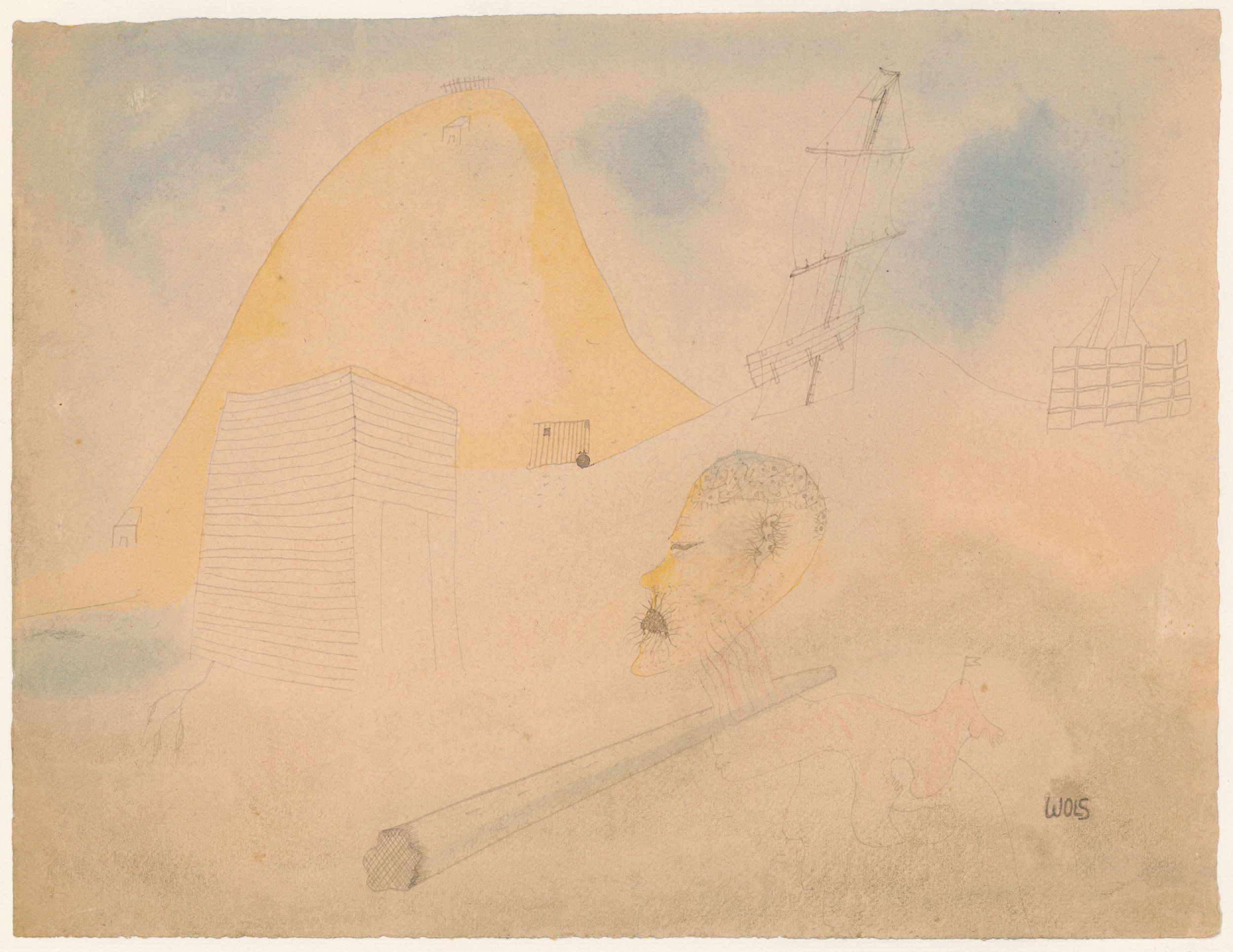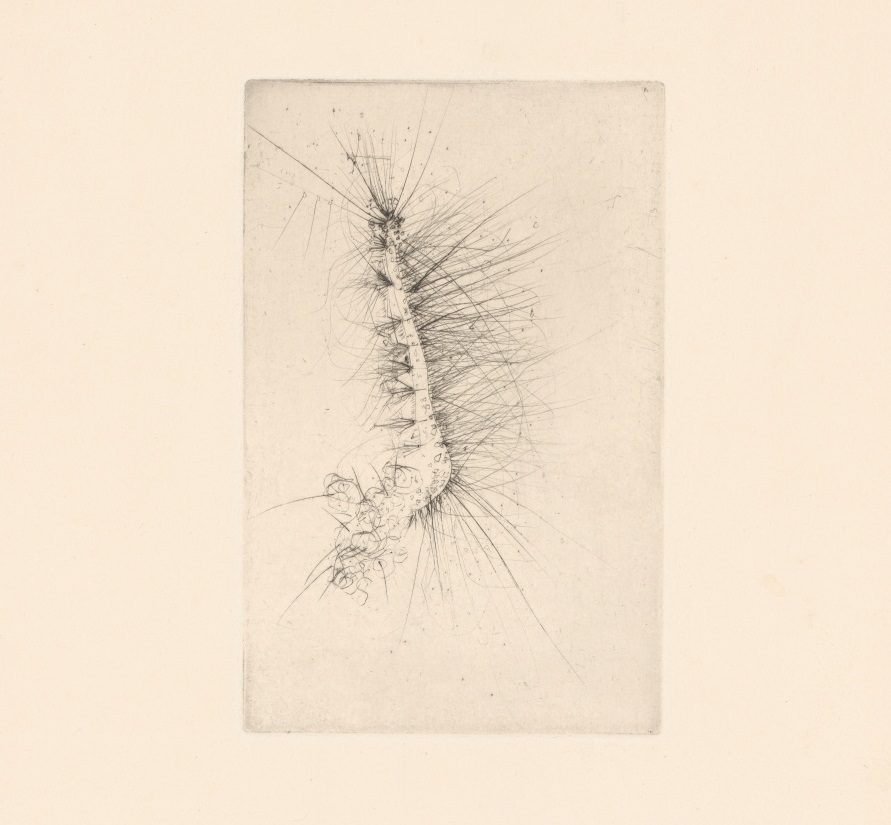“Seeing Means Closing Your Eyes”
Wols on Paper
Fifteen drypoint prints by the French-German artist Wols (1913–1951) that entered the Kunstmuseum Basel’s Kupferstichkabinett (Department of Prints and Drawings) in 2023 as a gift from a private collection in Basel are now showcased for the first time. Most of the prints in small formats were illustrations for books, which are also on display. The presentation is rounded out by early drawings by Wols from the collection. “Seeing Means Closing Your Eyes” invites visitors to immerse themselves in the creative universe of an artist for whom “a tiny piece of paper” could “contain the whole world.”
Born Alfred Otto Wolfgang Schulze in Berlin, Wols emigrated to Paris in 1932. In the years until his early death, he created a seminal oeuvre at the intersection between Surrealism and nonrepresentational art that helped pave the way for the abstract art of the Informel movement in postwar Europe. Wols’s early ink drawings and watercolors already show dreamlike and whimsical compositions with delicate linear structures,
biomorphic bodies, and geometric architectonic shapes. The same elements also appear in his prints.

Wols, untitled, around 1940, Kunstmuseum Basel, Kupferstichkabinett, Karl August Burckhardt-Koechlin-Fonds, Photo: Jonas Schaffter
Wols’s prints, all of which are undated, were produced during a brief period just after the Second World War. Twenty-nine of his drypoints were made for books by contemporary writers like Camille Bryen (1907–1977), Jean Paulhan (1884–1968), or the artist’s friend Jean-Paul Sartre (1905–1980). Such book illustrations were an important source of income in the artist’s unsettled life.
Wols also did not give titles to his enigmatic works. The titles they now bear were assigned after his death by others based on their own associations. When his first exhibition catalogue was compiled, the artist in fact explicitly requested: “Please, no analyses or explanations.” This openness of the compositions to personal interpretation is part of the particular charm of Wols’s prints.

